action
Alpha Protocol
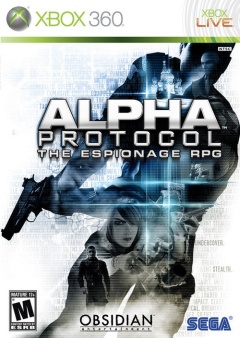 Alpha Protocol is Obsidian Entertainment’s first original title after a history of picking up series where BioWare left off, including Knights of the Old Republic. Released about two months ago and published by Sega, Alpha Protocol is subtitled “The Espionage RPG.” Definitely an enticing combination of words for fans of Western RPGs.
Alpha Protocol is Obsidian Entertainment’s first original title after a history of picking up series where BioWare left off, including Knights of the Old Republic. Released about two months ago and published by Sega, Alpha Protocol is subtitled “The Espionage RPG.” Definitely an enticing combination of words for fans of Western RPGs.
Critics rewarded the game a very wide range of scores, from 20% to over 80%, so it sounds like we have a love/hate game on our hands. There’s obviously something in Alpha Protocol that appeals to some gamers, so I’ve decided to give it a try myself. I’m a huge fan of the Mass Effect series, and from a distance, Alpha Protocol appears to be an attempt to replicate its success.
Word has already come out that the cold reception the game received has scrubbed any chance for a sequel, but Obsidian shouldn't complain too much since they're currently responsible for developing Fallout: New Vegas and Dungeon Siege 3.
So let’s not waste any more time and get into the first hour of Alpha Protocol for the Xbox 360.
Heavenly Sword
 The Playstation 3 was a tough sell for Sony back in 2006. Nevermind
the console's infamous $599.99 US price tag; it simply didn't have any
must-have games in its launch window. Much like the PS2, the system's
first year was mostly without a killer app. Even worse, adoption of the
Blu-Ray format wasn't nearly as fevered as the PS2's
prominently-featured DVD drive. It was once said that the best-selling
game in the PS2's first year was The Matrix on DVD: people ignored the
lack of games, they just wanted a DVD player, and PS2 provided a cheap
solution, which the $600 PS3 was anything but.
The Playstation 3 was a tough sell for Sony back in 2006. Nevermind
the console's infamous $599.99 US price tag; it simply didn't have any
must-have games in its launch window. Much like the PS2, the system's
first year was mostly without a killer app. Even worse, adoption of the
Blu-Ray format wasn't nearly as fevered as the PS2's
prominently-featured DVD drive. It was once said that the best-selling
game in the PS2's first year was The Matrix on DVD: people ignored the
lack of games, they just wanted a DVD player, and PS2 provided a cheap
solution, which the $600 PS3 was anything but.
Perhaps Sony's first true hope for a must-have game, Heavenly Sword was released in November 2007, a full year after the system launched. The game was marketed heavily, taking top slots in Sony's E3 presentations and making appearances on television months before it was to launch. When Heavenly Sword finally descended onto store shelves, reviews averaged out to a positive mark, though the range of praise spanned from "Perfection" to "disappointment."
As a bit of a 3D action game buff, I've always had my eye on Heavenly Sword, but I'm only just now playing it for the first time. I've got specific tastes in the genre: even God of War managed to disappoint me on some levels. Let's see if Heavenly Sword cuts it.
Dragon Ball: Origins
 When most people think of Dragon Ball, they think of energy blasts, non-stop fights against aliens, and dozens of episodes where the only thing happening is veins bulging. But once upon a time, Dragon Ball was a simple kung fu adventure show starring a kid with a monkey tail that was loosely-kinda-sorta-maybe based off of the classic Chinese tale “Journey to the West.” Dragon Ball: Origins takes us back to this simpler time before Goku was a demigod and every other thing wanted to blow up Earth, and delivers a solid adventure for old and new fans.
When most people think of Dragon Ball, they think of energy blasts, non-stop fights against aliens, and dozens of episodes where the only thing happening is veins bulging. But once upon a time, Dragon Ball was a simple kung fu adventure show starring a kid with a monkey tail that was loosely-kinda-sorta-maybe based off of the classic Chinese tale “Journey to the West.” Dragon Ball: Origins takes us back to this simpler time before Goku was a demigod and every other thing wanted to blow up Earth, and delivers a solid adventure for old and new fans.
LEGO Harry Potter: Years 1-4
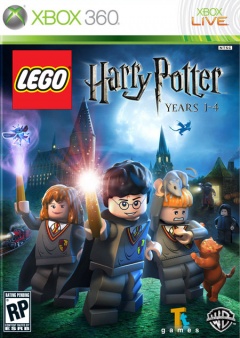 I’ve played every LEGO videogame made so far. Of all my videogames on the Xbox 360, only the LEGO games have the esteemed honor of having all their Achievements unlocked. I played them to completion as fast as possible, almost as if in a fever. If they made LEGO Schindler’s List, I’d probably play it. Same goes for LEGO Requiem for a Dream. The point I’m making here is that I love these games, and I’m twenty-six, and I’m not afraid to admit that they are just my cup of OCD tea.
I’ve played every LEGO videogame made so far. Of all my videogames on the Xbox 360, only the LEGO games have the esteemed honor of having all their Achievements unlocked. I played them to completion as fast as possible, almost as if in a fever. If they made LEGO Schindler’s List, I’d probably play it. Same goes for LEGO Requiem for a Dream. The point I’m making here is that I love these games, and I’m twenty-six, and I’m not afraid to admit that they are just my cup of OCD tea.
Conversely, I’m also a huge Harry Potter fan. I’m one of those rare folks that actually read the first three books before the first movie came out and became a worldwide sensation. I had the sixth book spoiled for me on a Lord of the Rings TCG forum. I read the last book in less than 24 hours, locked up in my parents’ basement, only coming up once to eat dinner and not talk to anyone. The movies are hit or miss in my mind, but the world and characters and magic of it all is something I can’t get enough of. Neither can my fiancée. We’re getting married this October and heading to Universal Studios on our honeymoon to check out the Wizarding World of Harry Potter.
I’ve been excited about this merging of two great entities since I first read about it. I always expected the next universe to be LEGO-ized to be Spider-Man’s. My expectations are high, and after having played the demo that was recently released I have no fears that the first hour for LEGO Harry Potter: Years 1-4 will be anything but spectacular.
God of War III
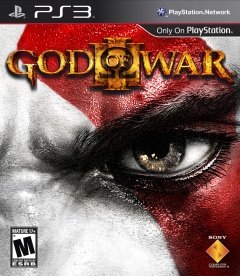 History lesson #1: the ancient Greeks were crazy. Sure, they essentially laid the foundation for western society, but they also worshipped more gods than anybody could possibly remember, all of whom led lives with more dramatic twists and turns than a daytime soap opera. I doubt Days of Our Lives ever featured a giant man made of rock who married his sister and ate his kids, after all.
History lesson #1: the ancient Greeks were crazy. Sure, they essentially laid the foundation for western society, but they also worshipped more gods than anybody could possibly remember, all of whom led lives with more dramatic twists and turns than a daytime soap opera. I doubt Days of Our Lives ever featured a giant man made of rock who married his sister and ate his kids, after all.
History lesson #2: in 2005, God of War tore its way into the still-beating hearts of PS2 owners with its brutal take on Greek mythology. The game introduced us to Kratos, Spartan servant of the gods and the kind of pitiless killer that most actual Spartans probably strived to be. God of War sold bajillions of copies, spawned equally-successful sequels on the PS2, PSP, and PS3, and even had its own terrible SpikeTV special for rabid fans to embarass themselves in front of the world. Not bad for fanfiction, is it?
History lesson #3: the action-packed start to God of War II is actually responsible for the creation of The First Hour. The game certainly started with a bang, thrusting the player into an intense situation right off the bat that dropped jaws to the floor. Does God of War III have the same inspirational power?
Metal Gear Solid 4: Guns of the Patriots
 Metal Gear Solid 4: Guns of the Patriots is the final chapter of the Metal Gear saga (kind of). It seeks to wrap up the complicated plots from the previous three games, which up to this point seem to be fairly divergent. It also seeks to perfect the gameplay and presentation for which Kojima-san and his Metal Gear Solid games have become famous.
Metal Gear Solid 4: Guns of the Patriots is the final chapter of the Metal Gear saga (kind of). It seeks to wrap up the complicated plots from the previous three games, which up to this point seem to be fairly divergent. It also seeks to perfect the gameplay and presentation for which Kojima-san and his Metal Gear Solid games have become famous.
It is also the first game in the series on the PlayStation 3, and it uses this hardware to be one of the best looking games ever. The MGS series has always used the in-game graphics engine to render its cutscenes to prevent a jarring disconnect between graphic styles, and this is the first time it works perfectly. The in-game character models look good enough that you can't complain a bit. The facial animations and lip-syncing is increbible. The game is, in a word, stunning.
So we know the game looks good, we can tell that from screenshots and trailers Is it good? Is it fun? Is it worth buying? For those of you with short attention spans, the answer is yes. For everyone else, read on.
The QTE cure: Singin' in the Heavy Rain
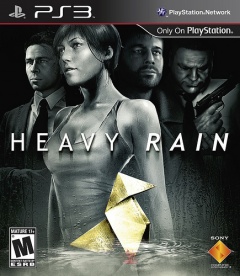 Quick Time Events. Ever since God of War and Resident Evil 4 exploded
onto the scene with button-prompt sequences of gore and horror, the
industry has shown its sheep-like nature and incorporated these Gotcha!
moments into games without thinking about how they make an
interactive experience better. Many gamers have adjusted to the fact
that every cutscene now has an awful series of play buttons throughout, but I
personally would like to cram all the QTEs in the world into a space
shuttle full of cobras and launch them directly into the sun if it meant
I'd never have to see another one again.
Quick Time Events. Ever since God of War and Resident Evil 4 exploded
onto the scene with button-prompt sequences of gore and horror, the
industry has shown its sheep-like nature and incorporated these Gotcha!
moments into games without thinking about how they make an
interactive experience better. Many gamers have adjusted to the fact
that every cutscene now has an awful series of play buttons throughout, but I
personally would like to cram all the QTEs in the world into a space
shuttle full of cobras and launch them directly into the sun if it meant
I'd never have to see another one again.
That said, it's not impossible to come across decent use of QTEs.
Indeed, before Resident Evil 4 set the standard at the advent of 2005,
the mechanic was most prominently-used by the Dreamcast's crown jewel,
Shenmue. In fact, it was Yu Suzuki, that game's director, who coined the
term "Quick Time Event." Suzuki put the gimmick to good use throughout
Shenmue, allowing protagonist Ryo Hazuki to do everything from tossing
drunkards around in bar brawls to saving little girls from incoming
soccer balls. One of the reasons the game is so beloved today is that it
allowed the player to engage in such a wide variety of scenarios, many
of which were supported with smartly-designed QTEs.
Good QTEs didn't end with Shenmue, however, even though sometimes it seems that's the case. Like God of War, other Playstation heavyweights have managed to use QTEs to enhance a game experience. I think it's only fair that we look at a few of those, as well as some alternatives to these timed button-prompts for cinematic flair in games.
The QTE plague: What hath God of War wrought?
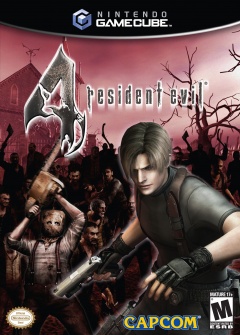 Quick Time Events. So many games have used them to some extent in the
last five years that just about every gamer has an opinion on them.
Mine is that they are the worst gameplay gimmick to take the industry by
storm in a long time, and I wouldn't mind seeing them all packed into a
burlap sack filled with leeches and thrown into the depths of a
volcano. They're tacky, they're unintuitive, and their attempts to
engage players in cinematic animations backfire and break the sense of
immersion one has with a game. And unfortunately for me, they're just
about everywhere these days.
Quick Time Events. So many games have used them to some extent in the
last five years that just about every gamer has an opinion on them.
Mine is that they are the worst gameplay gimmick to take the industry by
storm in a long time, and I wouldn't mind seeing them all packed into a
burlap sack filled with leeches and thrown into the depths of a
volcano. They're tacky, they're unintuitive, and their attempts to
engage players in cinematic animations backfire and break the sense of
immersion one has with a game. And unfortunately for me, they're just
about everywhere these days.
Two behemoths let loose in early 2005 can be thanked -- or blamed -- for the salvo of games that have featured QTEs in the last five years. The first, with a January 11 release date, was Resident Evil 4. The game was extremely well-received: it won many Game of the Year awards, offered a fresh take on the aging Resident Evil formula, and gave Gamecube owners a third-party exclusive worth bragging about. The other member of the gruesome twosome that brought us into the era of QTEs is known as God of War. Released just two months after Resident Evil 4, the game received just as many accolades and turned heads back to the PS2 as quickly as they'd been lost to the Gamecube's horror hit. Is it any wonder that the industry went in the direction it did when two such monumental successes as these both prominently featured a relatively unused gameplay gimmick?
Today we'll take a look at how the smart use of QTEs helped put these two games on the map, and watch a few examples of QTEs gone wrong. And trust me, there was a huge pool of resources for the latter.
Onimusha: The Best Series Everyone Already Forgot About
 After a flurry of six games in just five years, there hasn't been another Onimusha game since March 2006. I understand that the series always played second fiddle to Capcom's other series, Devil May Cry, but man, Onimusha always had an awesome combination of historical inaccuracy and great hack-and-slash action.
After a flurry of six games in just five years, there hasn't been another Onimusha game since March 2006. I understand that the series always played second fiddle to Capcom's other series, Devil May Cry, but man, Onimusha always had an awesome combination of historical inaccuracy and great hack-and-slash action.
I played and loved the four main games in the series, even the one that takes place in France with Jean Reno. The first time I ever played an Onimusha game was at my uncle's house; the only thing I knew about Onimusha: Warlords was that it played like Resident Evil and was rated Mature. This seemed to indicate to me that the game would be scary or something, but what it turned out to be was simply a blast to play. Fast action, great puzzles, a storyline with famous Japanese figureheads that I recognized, and more gore than scare. My kind of game.
Iron Man 2
 Sequels. Comic franchises converted to video games. Movie tie-ins.
Studios closing their doors. Needless to say, there are a lot of
barriers that can narrow the odds of producing a high quality title. It
would seem that Iron Man 2 was forced to hurdle all of them. As I
mentioned in my recent First Hour review of Iron Man 2, its predecessor
was critically panned. But did it deserve it? Or did it fall prey to
the echo chamber of hate that often befalls licensed products and spin
offs? The truth is, Iron Man had it’s problems. From unwieldy controls
to frame rate issues, it seemed like it stumbled each time it would
just get up to speed. But it had moments of fun, high intensity super
hero action that carried one through to each subsequent mission. Going
into a sequel, one assumes that Sega Studios San Francisco, the
developer behind both titles would make an effort to improve the
failings of the original while trying to maintain those things they got
right the first time. The question is, did they pull it off?
Sequels. Comic franchises converted to video games. Movie tie-ins.
Studios closing their doors. Needless to say, there are a lot of
barriers that can narrow the odds of producing a high quality title. It
would seem that Iron Man 2 was forced to hurdle all of them. As I
mentioned in my recent First Hour review of Iron Man 2, its predecessor
was critically panned. But did it deserve it? Or did it fall prey to
the echo chamber of hate that often befalls licensed products and spin
offs? The truth is, Iron Man had it’s problems. From unwieldy controls
to frame rate issues, it seemed like it stumbled each time it would
just get up to speed. But it had moments of fun, high intensity super
hero action that carried one through to each subsequent mission. Going
into a sequel, one assumes that Sega Studios San Francisco, the
developer behind both titles would make an effort to improve the
failings of the original while trying to maintain those things they got
right the first time. The question is, did they pull it off?
After sitting in on the developer conference call for Iron Man 2, I was
hopeful that things were looking good. They talked about a dedication
to listening to fans, and to implementing those lessons they learned
from user feedback on the first game. They talked about simplified
controls, vast levels, destructible environments and deep
customization. They touted a boss that is “bigger than any boss in any
game ever”. And War Machine. War Machine sounded like a perfect
addition to the Iron Man gaming universe. Yes, it sounded like it had
really come together. And so I eagerly anticipated my review copy,
thinking back to the flawed but fun experience I had with the first
game.
